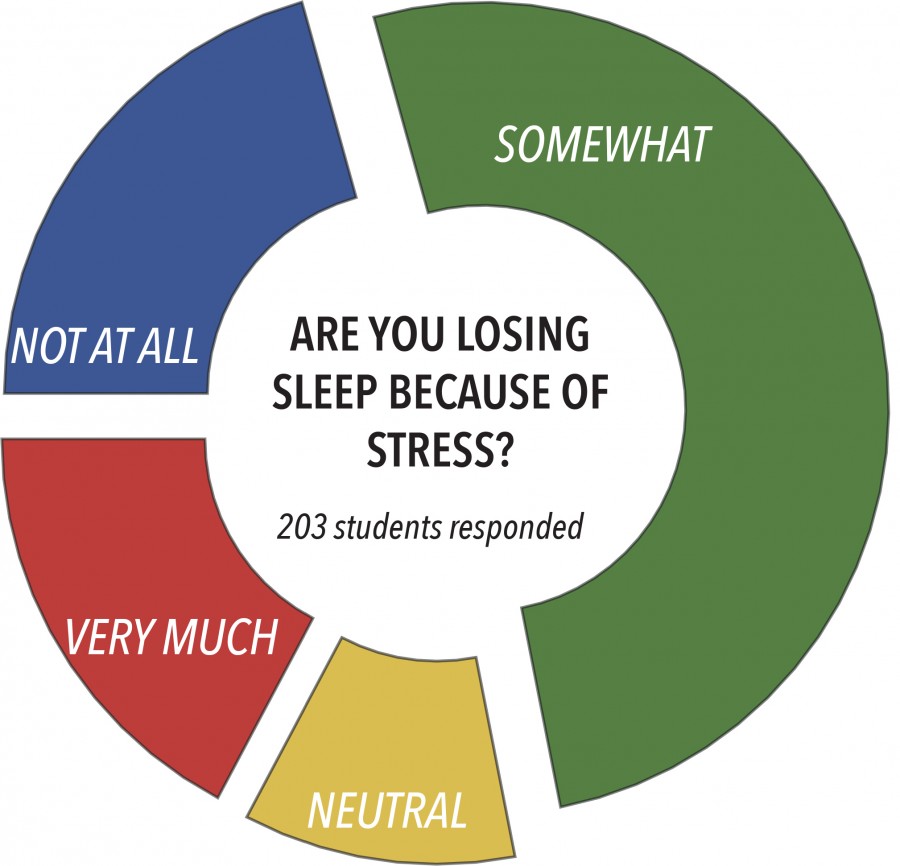Deconstructing happiness: How well-being fits into high school
March 24, 2016
How are you? No, really. Though those words are often spoken in passing, meriting a quick one or two word answer, a recent rise in the practice of happiness and mindfulness has led people to more deeply consider their answers to that question.
With an increase in responsibilities and pressure to succeed placed upon students, schools across the country have recently begun placing more significance on students’ happiness and wellbeing.
In the past decade, the focus on “practicing happiness” has resulted in schools taking more steps to support the wellbeing of their students. The Harker LIFE program and other school-based wellness efforts aim to help students in similar ways.
“The idea [of LIFE] was built off conversations with students and faculty and we realized that that was our opportunity to give kids in all grades a chance to hear some information that maybe they’ve heard before but maybe they need to hear again from a different point of view,” Jane Keller, director of LIFE at the upper school, said.
Student stress, depression and suicides have been rising in recent years. Today, around five to eight times more students have been professionally diagnosed for depression or anxiety than their counterparts half a century ago.
The high expectations for success make Silicon Valley young adults prime victims of teenage stress and depression. As a psychiatrist and psychologist living in California, Dr. Michael Freeman has conducted research on the ways in which Bay Area students are affected.
“I think that Silicon Valley and other more affluent areas are well known for the pressure that high school students in particular feel to go to very competitive colleges and to have exceptionally high levels of achievement,” he said. “That pressure is unrealistic, and the stress that the schools put upon the kids is unrealistic and makes a normal mental health condition even worse, so there’s a higher rate of suicide.”
In light of four students at Palo Alto High School having committed suicide from October of 2014 to May of 2015, the Centers for Disease Control and Prevention (CDC) along with the Santa Clara County of Public Health Department (SCCPHD) conducted an Epi-Aid last month from Feb. 16 through Feb. 29. The Epi-Aid, an investigation of an urgent public health emergency, defined and examined sources of suicidal behaviour amongst youth in Santa Clara County, California.
 As numerous students in the Bay Area face mental illness and the struggle to stay positive, many specialists have concentrated their work to help balance and maintain the overall wellness of young adults.
As numerous students in the Bay Area face mental illness and the struggle to stay positive, many specialists have concentrated their work to help balance and maintain the overall wellness of young adults.
Dr. Rona Hu, a clinical associate professor in psychiatry and behavioral sciences, hopes to alleviate student stress caused by parents in Palo Alto High School and other high schools in the Bay Area.
“We’re doing things where parents look at their own assumptions about how they were raised and how that might be mismatched with what their kids are learning in the U.S.,” Dr. Hu said. “The American system is much less like a ladder and much more like hiking up a mountain, so there are different directions that you can go: you can go laterally for a while, you can go downhill for a while.”
Neha Tallapragada (9), a firm advocate for raising awareness for mental illness, founded Nightlite, a student-run organization to fundraise for this cause.
“I decided to start [Nightlite] because I got involved with [National Alliance on Mental Illness] (NAMI), and I did an event for them when I was in eighth grade; I realized that this was an issue that was important to the community,” Neha said. “I live in Palo Alto where it’s obviously something that is a very important thing for the community to discuss, especially now, so I decided that it would be good to let the students have their own voice in these issues and facilitate something that would help the students specifically because one in four teenagers in the USA suffers a mental illness so it’s important that we destigmatize that.”
Efforts to create the time management worksheet students complete yearly and to change the Harker schedule into a block system were first brought up by Harker’s Challenge Success committee in an effort to reduce student stress.
“[The time management worksheet] was this idea of empowering kids to look at what they could actually fit in their lives and make good decisions about their time allocations,” Kelly Horan, psychology teacher and Challenge Success committee member said. “We’re here to educate for life, and in educating for life, we know that you are a person who has a brain that needs to be chock full of knowledge, but you are also a person who needs to balance emotions, make good choices in life and who needs to be guided in doing that.”
Naomi Molin (12) has been involved in wellness efforts at the Upper School as a student representative on the LIFE board and a Challenge Success committee member.
“I think it is all just a matter of balance when it comes down to it,” she said. “That is really what Challenge Success is about; it is about balance. Not everyone knows how to balance their academic, extracurricular, and personal lives correctly and that is where the problem lies.”
Donnovan Yisrael, Manager of Emotional & Sexual Health Programs at the Vaden Health Center, teaches the class “The Practice of Happiness” at Stanford.
“We just try to open people’s mind to the skills, the practices, these tools, so we just talk about how to cope with fear and worry and eliminating all this stuff. We help people learn how to cope with them,” he said. “A new concept in the field of neuroplasticity is that what ever the mind dwells upon gets stronger than whatever your mind doesn’t dwell upon or focus upon, which gets weaker; so having a gratitude journal, for example, teaches your mind to have gratitude as opposed to just always complaining about what’s wrong.”

